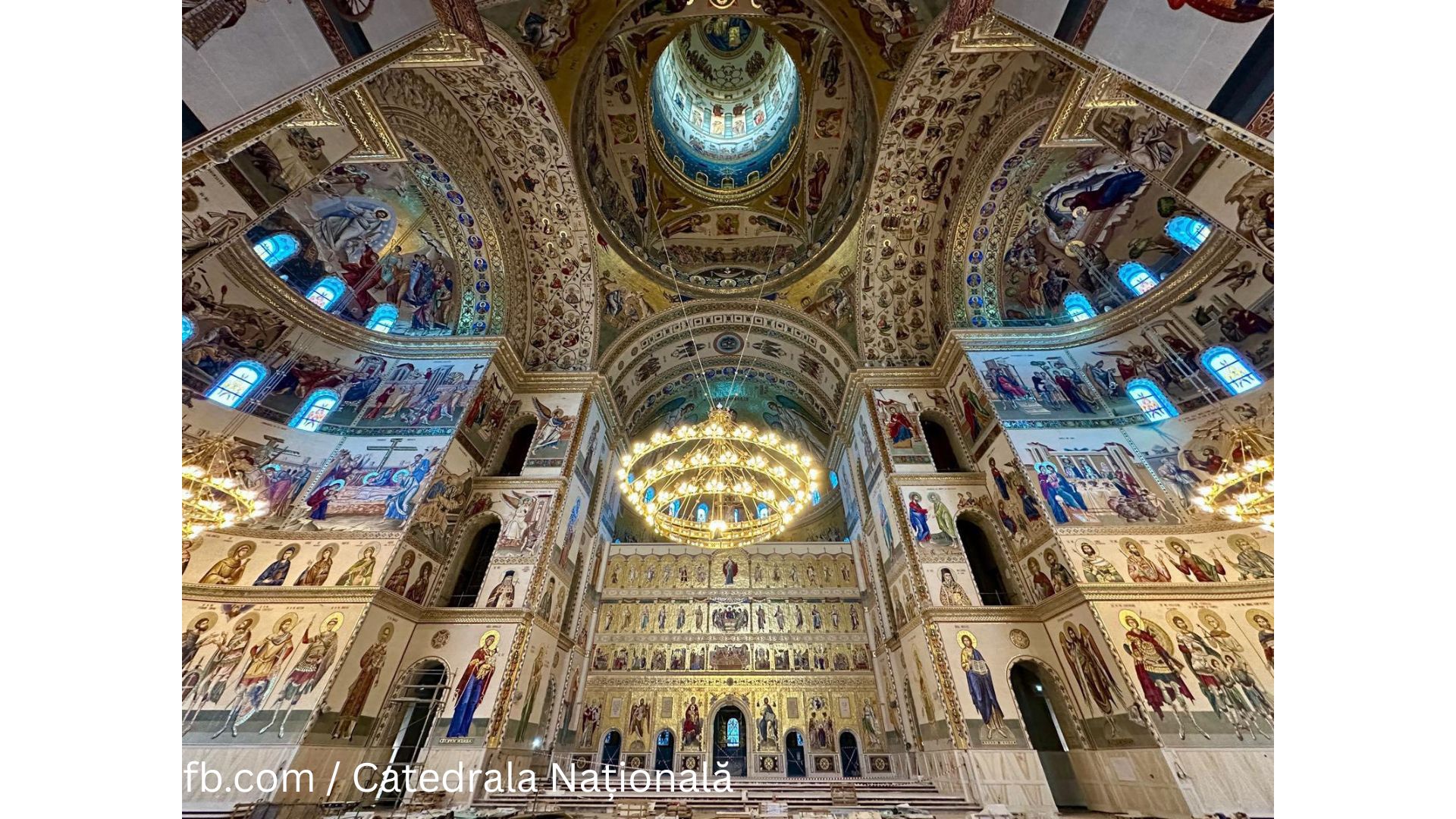“The gift of the Romanian people to eternity”
26th October 2025 will go down in history as the date of the consecration of the National Cathedral in Bucharest.

Roxana Vasile, 29.10.2025, 12:54
The almost century and a half long dream of the Romanian Orthodox Christians, both church people and ordinary believers, to have a National Cathedral is now a reality. And October 26, 2025 will go down in history as the date of the consecration of this impressive place of worship built in the center of Bucharest. The festivity was intended to crown year-long celebrations dedicated to the 140th anniversary of the recognition of the independence of the Romanian Orthodox Church and to the 100th anniversary of its elevation to the rank of Patriarchate through numerous unique events in its history, including, for example, the canonization of 16 Romanian saints.
Located in the immediate vicinity of the Palace of Parliament (the second largest administrative building in the world), the National Cathedral and the adjacent buildings cover a surface area of approximately 110 thousand square meters. Speaking for Radio Romania International, the spokesperson for the Romanian Patriarchate, Father Adrian Agachi, said:
“From 2007 to 2010, the design work took place, which was very extensive, because it is a building that also includes many annex buildings, not just the actual space of the National Cathedral. Building works, which will probably take another several years to complete, have lasted for the last 15 years, but today we are already at a very advanced stage, unexpectedly so, considering that we have also gone through difficult periods, such an economic crisis, inflation, increasing costs of materials and labor, all of which God has helped us to overcome. When we look at the ensemble of the National Cathedral, we think not only of a symbolic space of Romanian spirituality, but also of a practical liturgical necessity, because the old Patriarchal Cathedral was too small for the thousands of believers who wished to attend the service around the big holidays, and sometimes even on a regular Sunday. An old dream has been fulfilled, but in a modern form, because the annex buildings will house the Museum of Romanian Christianity and conference rooms where cultural events will take place, so the entire ensemble of the National Cathedral is not only a liturgical space, but also a very important cultural and philanthropic space.”
The entrance to the esplanade in front of the Cathedral is flanked by two symmetrical towers: one will bear an inscription paying tribute to the heroes of the Romanian nation, while the other will feature one dedicated to the main founders and donors of the Cathedral. Four galleries with columns, two of which are concave, will delineate the external liturgical space. Also within the complex are two buildings housing administrative, social or medical activities of the Church or for accommodation of pilgrims. The central structure of this ensemble, the National Cathedral, is one of the largest in the Orthodox world. Given the Latin character of Romanian Orthodoxy, its architecture is a synthesis of Byzantine elements and monumentality specific to Western cathedrals, taking into account that, today, a large part of the Romanian diaspora is in the West. The six bells of the Cathedral were made in Austria. The largest bell, weighing over 25 tons, can be heard within 15 kilometers during important events and celebrations. But let’s go inside through one of the bronze doors that weigh four tons each and are controlled by a computer! Father Adrian Agachi:
“Inside the Cathedral, you can see all the Romanian saints from our calendar depicted in mosaic paintings, almost 200 portraits of Romanian saints. In total, we have over 300 figures of saints depicted in mosaic paintings. The cathedral has a length of 120 meters and a height of 127 meters, if we include the cross in the big tower. On the other hand, we can think about the countless scenes depicted on stained glass windows, which also represent a kind of icons on glass. The stained glass window above the entrance to the National Cathedral symbolizes the moment of the Ascension of the Savior, the main saint of the Cathedral.”
Apart from its resistance in time, which prevents it from losing its aesthetic properties, the mosaic is resistant to moisture and high temperatures and can be cleaned very easily, at low cost. That is why the mosaic was chosen for the interior of the Cathedral It was purchased from Italy, from one of the most prestigious mosaic suppliers in the world. Let’s just say that for one square meter of mosaic, approximately 10 thousand pieces are needed, which are glued by hand. Painter Daniel Codrescu coordinated the team of approximately 200 people who created the icons and spoke to RRI about the working technique:
“It all starts with an iconographic plan, just like in the case of a painting, which is discussed with Father Patriarch Daniel and approved. After that, the painted projects are created on a smaller scale than the real one, which are then enlarged, and after that everything takes place in the workshop, for the most part, where, after the paintings are created, they are practically translated into mosaic by applying those colored mosaic cubes of glass or natural stone, assembled in such a way as to recreate the initial image. After completing this stage, we move on to the assembly of all the pieces and, of course, their application on the wall of the Cathedral, which, again, is an important and very difficult stage, because it takes into account the conditions on the construction site, the heights, the very large surfaces, the need for these operations to be carried out with the greatest responsibility, so that they will last over time and with no technical problems.ʺ
The altar screen of the National Cathedral in Bucharest, consecrated in 2018, has been recognized as the largest in the world by the World Records Academy. Once finished, the Cathedral will also have the largest interior collection of mosaic paintings, accounting for approximately 25,000 square meters. Currently, about 15,000 have been finished. The apse of the sanctuary features the largest depiction of the Virgin Mary (Platytera) in Romania and one of the largest in the Orthodox world.
The Cathedral in Bucharest is however much more than a sum of records! It is, first and foremost, a symbol of the national and spiritual identity of the Romanians. It is also, as Patriarch Daniel of the Orthodox Church has repeatedly said, “the gift of the Romanian people to eternity.”






























